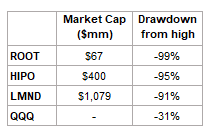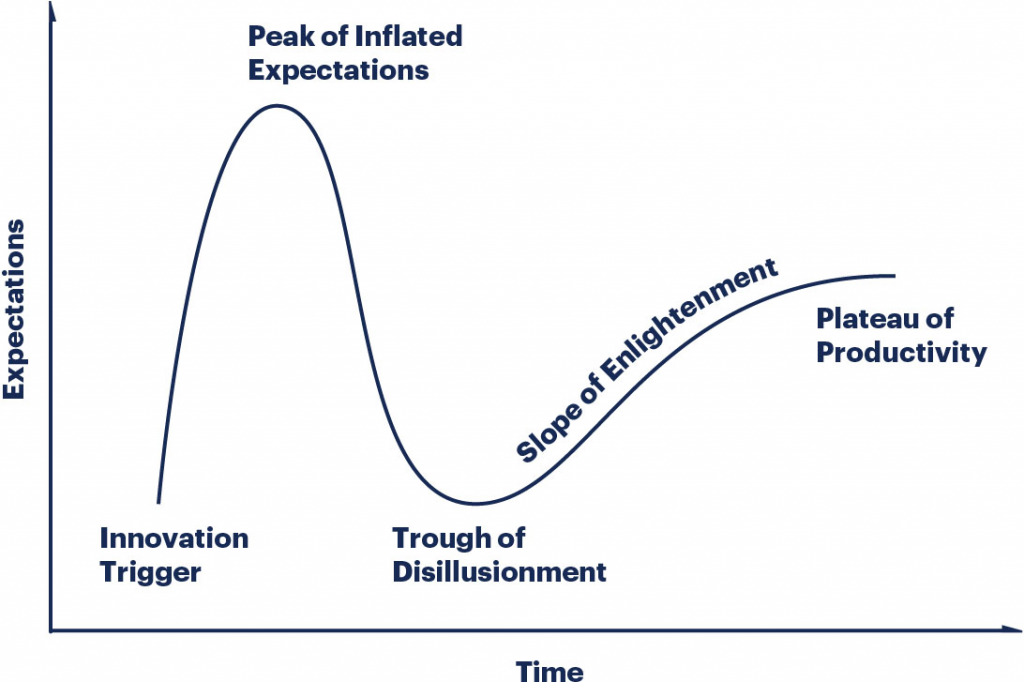According to recent market research, blockchain in insurance will expand from $64.5 million of revenue and cost savings in 2018 to $1.4 billion this year -- a compound annual growth rate of 85%!
Blockchain has the power to bring about significant efficiency gains, cost savings, faster payouts and fraud mitigation while allowing for data to be shared in real time among various parties in a trusted and traceable manner. Insurers are looking to harness the power of blockchain to infuse insurance processes with the three T's: trustworthiness, transparency and tamper-resistance.
As such, they are attempting to reinvigorate the very roots of the insurance industry.
Advantages of Blockchain
The application of blockchain for insurance industry makes absolute sense when one considers the following advantages:
Stronger Trust Mechanism
Blockchain technology has set the gold standard for trust and fairness. The distributed and immutable nature of blockchain ledgers makes them more transparent and reliable. In addition to inspiring accountability, the consensus algorithm of blockchain technology ensures that all stakeholders, be they policyholders, insurers, agents or brokers, agree on the underlying principles of the policy. Such measures set the stage for smart contracts that establish provenance while maintaining auditability. Blockchain can also establish a tamper-proof repository of customer data that can be safely shared among organizations.
Blockchain can also reduce risk of error and duplication of effort through this mechanism of cooperation, saving time and resources. Overall, it improves visibility of customers’ activity across firms, improving compliance and regulatory oversight.
Room for Automation
The insurance industry gets bogged down by money- and time-wasting inefficiency stemming from billions of forms, human error and poor communication among parties. Digital ledger systems like blockchain can help automate outdated processes, save billions of hours of paperwork each year and reduce human error because all forms and data are safely stored along the chain.
Smart contracts can achieve a lot more than granting visibility to transactions. Insurance agencies using blockchain-based smart contracts can inject automation into insurance processes and workflows. As the name indicates, smart contracts are self-actualizing lines of code that execute when their governing conditions are met. Accordingly, setting these ground rules can act as the rule-based algorithm that automatically sets off the smart contract.
Better Data Management
The rapidly digitalizing world churns out high volumes of data that can benefit insurers. However, data management can be a nightmare. With blockchain, such data packets can be stored on the network where an AI-powered engine can read and vet this data. Such a system helps establish a single source of truth and improve products and services in multivariate ways.
Blockchain technology can also be used in secure and transparent data management by providing a decentralized ledger for recording transactions. This eliminates the need for intermediaries, reducing the risk of data breaches and cyber-attacks.
Faster Fraud Detection
One of the biggest pain points of the insurance industry is fraud. Blockchain’s innate feature of capturing time-stamped transactions with complete audit trials makes it extremely difficult for fraudsters. For instance, a blockchain-powered ledger can be used to track data around high-value items like jewelery. This ledger can also replace authenticity certificates to avoid duplicate claims, fake replacements and fake insurance claims.
Blockchain for the insurance industry can maintain an auditable trail of policyholder behavior. Such a trustworthy and reliable record can act as a precedent for tracking customer behavior. Any action that does not fit the defined set of patterns can be flagged as fraud or attempt to defraud, and immediate action can be taken to mitigate its effect.
See also: Blockchain’s Future in Surety Industry
Lower Administrative Costs
The use of blockchain will reduce operational and administrative costs in many ways. For starters, it will help consolidate and validate data automatically, which significantly reduces clerical tasks. At the same time, it helps establish policyholder identity and performs routine activities like know your customer (KYC) verification or anti-money-laundering (AML) processes.
Similarly, blockchain can even support automated claims processing by checking policy-related data and adjusting the claim. Such actions will cut the need for human resources, reduce costly errors and improve overall cost-efficiency.
Addressing Underserved Markets
The low cost of smart contracts and their transactions means that many products can be rendered more competitive for penetration of underinsured markets in the developing world.
Practical Use Cases
Here are some examples of different verticals of insurance using blockchain technology to solve real-world problems:
Health and Medical Insurance
Medical insurance using blockchain-based patient files can maintain an accurate and detailed medical record on the network. It can also be used to establish a ring of security as such confidential data does not pass through several hands and only authorized personnel can handle it. Healthcare providers can seamlessly share data with insurers, which will allow the latter to process claims faster and without any risks.
Travel Insurance
Disruptions during travel can upset a well-curated itinerary. Travelers can offset such unpleasant shocks and protect their interests through travel insurance. With the involvement of blockchain technology in insurance, smart contracts can automatically execute in the event of flight cancellation or delay, and the policyholder will get the reimbursement directly in their account even without having to raise a claim!
Property and Casualty Insurance
Blockchain can transform the property and casualty (P&C) segment of insurance. From smarter underwriting and vigilant risk assessment to seamless onboarding and smart policy generation to claims registration and payment -- blockchain-based P&C insurance software can improve everything. Moreover, it grants coverage to a variety of assets, from homes to automobiles, which come under the ambit of P&C insurance and centralizes all the insurance-related data.
See also: Blockchain in Insurance: 3 Use Cases
Closing Thoughts
It is evident that blockchain technology is steering the industry in the right direction. Different verticals of the insurance industry can enjoy the benefits of blockchain technology, be it industry-specific or generalized.
However, the goal of insurance using blockchain is quite complicated. You would still have to reinforce security against cyberattacks, maintain consumer data privacy and confidentiality and justify the cost of a technology overhaul. Fortunately, you can overcome any potential problems with the right set of developers or technology partners that can lead the way.




















